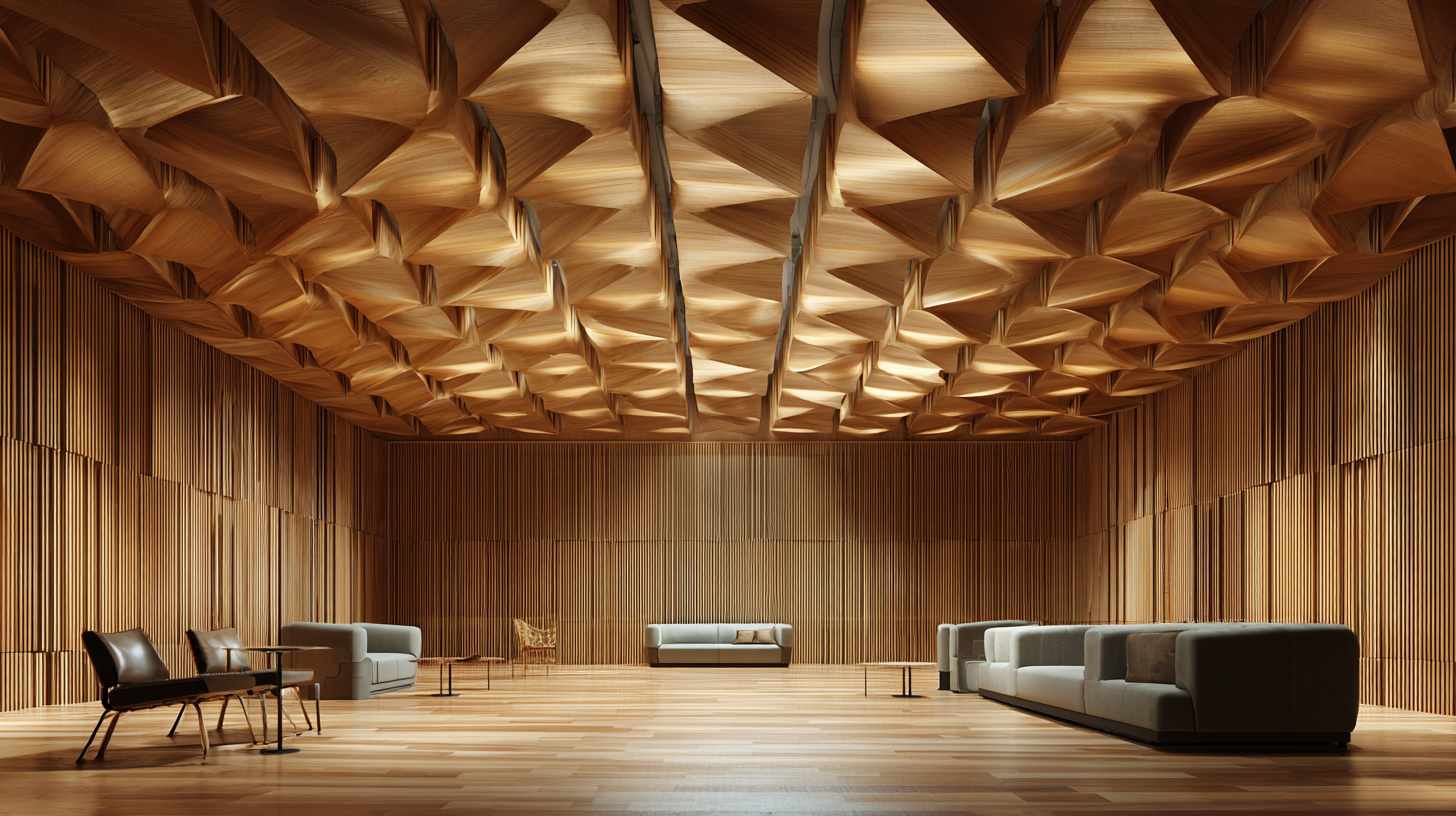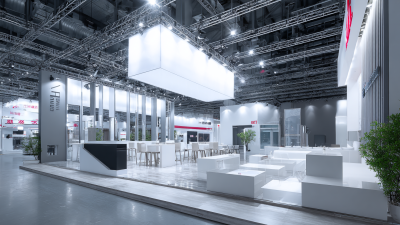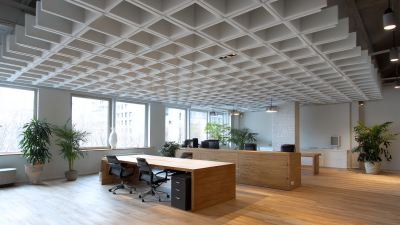Blog
Discovering Innovative Acoustic Solutions: A Guide to Enhancing Your Sound Environment
In today's fast-paced and highly interconnected world, the importance of a well-designed sound environment cannot be overstated. Innovative acoustic solutions are rapidly gaining attention, as studies indicate that 70% of employees in open-office environments are dissatisfied with the noise levels, leading to decreased productivity and increased stress. According to a report by the World Health Organization, noise pollution is linked to various health issues, including hypertension and sleep disturbances. Furthermore, the global market for acoustic solutions is projected to reach $12 billion by 2025, reflecting a growing recognition of the need for effective sound management in both residential and commercial spaces. By exploring the latest developments in acoustic solutions, we can enhance our daily experiences and foster environments that promote well-being and efficiency. This guide aims to shed light on innovative strategies to improve your sound environment through practical and creative acoustic solutions.

Understanding the Importance of Acoustic Solutions in Modern Environments
 Acoustic solutions play a crucial role in modern environments, impacting everything from productivity in offices to the enjoyment of music in entertainment spaces. As urban areas become increasingly dense and the use of open-concept designs in workplaces becomes more common, the need for effective sound management is essential. Poor acoustics can lead to distractions, miscommunication, and overall discomfort, undermining the functionality of a space. By investing in innovative acoustic treatments, such as sound-absorbing panels and strategically placed furnishings, we can mitigate these issues and create a more harmonious sound environment.
Acoustic solutions play a crucial role in modern environments, impacting everything from productivity in offices to the enjoyment of music in entertainment spaces. As urban areas become increasingly dense and the use of open-concept designs in workplaces becomes more common, the need for effective sound management is essential. Poor acoustics can lead to distractions, miscommunication, and overall discomfort, undermining the functionality of a space. By investing in innovative acoustic treatments, such as sound-absorbing panels and strategically placed furnishings, we can mitigate these issues and create a more harmonious sound environment.
In addition to fostering better communication and concentration, effective acoustic solutions also enhance the overall aesthetic of a space. Modern designs often incorporate materials and technologies that not only address sound concerns but also contribute to the visual appeal of the environment. This dual function is particularly relevant in settings like restaurants, theaters, and educational institutions, where ambiance is paramount. Understanding the importance of acoustic solutions in these contexts leads to more thoughtful design choices, ultimately resulting in spaces that promote well-being and enjoyable experiences for all users.
Exploring Different Types of Innovative Acoustic Materials and Technologies
The exploration of innovative acoustic materials and technologies is pivotal in enhancing sound environments across various sectors.
As the global acoustic metamaterials market is projected to grow significantly, reaching approximately $4.8 billion by 2033, there is a surge in demand for advanced solutions that address sound management challenges. Acoustic metamaterials utilize unique structures to manipulate sound waves, enabling improved sound absorption and reduction of unwanted noise in settings ranging from urban environments to performance venues.
Recent conferences and initiatives highlight the industry's commitment to develop cutting-edge acoustic solutions. Collaborative efforts among research institutions and industry leaders are fostering innovation in this field. For instance, advancements in acoustic panels, soundproofing materials, and waveguiding technologies are transforming spaces, allowing for tailored acoustics that enhance auditory experiences.
As technologies evolve, the integration of smart acoustic systems is also anticipated, offering dynamic control over sound properties in real-time, further elevating the importance of innovative acoustic materials in modern sound design.
How to Assess Your Current Sound Environment for Potential Improvements
Assessing your current sound environment is the first step toward discovering innovative acoustic solutions that can enhance your space. Begin by identifying the primary sources of noise. Consider where the most disruptive sounds are coming from—whether it's traffic outside, loud neighbors, or internal sources like home appliances. Once you've pinpointed these sound sources, you can better understand which areas need improvement.
**Tips:** Use sound level meters or mobile apps to measure decibel levels in different areas of your environment. This data will help you determine which locations require the most attention. Additionally, keep a journal of when and where you notice disruptive noises; this will highlight patterns and specific times of the day that may be most problematic.
Next, explore the existing materials and layout of your space. Hard surfaces tend to reflect sound, while soft furnishings can absorb it. Look for opportunities to replace or add materials that enhance acoustics. For instance, rugs, curtains, and upholstered furniture can dampen noise levels significantly.
**Tips:** Consider layering your acoustic solutions. For instance, combining carpets with wall-mounted acoustic panels can create a more balanced sound environment. Even adding plants can help; tropical plants, for example, not only beautify a space but also absorb sound waves, contributing to a quieter atmosphere.
Practical Applications of Acoustic Solutions in Various Settings
The application of innovative acoustic solutions has become increasingly vital in enhancing sound environments across various settings, from residential spaces to urban areas. Recent advancements in acoustic metamaterials have shown promise in improving low-frequency sound transmission loss, particularly in designing double-panel partitions for noise-sensitive locations. According to a study on this cutting-edge technology, these materials allow for precise control over sound waves, enabling enhanced sound insulation and making them ideal for environments such as recording studios or theaters, where acoustic clarity is essential.
Moreover, the use of bio-inspired acoustic metamaterials is paving the way for effective traffic noise control. By leveraging machine learning techniques, these solutions can adapt to the diverse acoustic challenges presented by urban landscapes, providing a groundbreaking method to mitigate noise pollution experienced in city settings. With the integration of directional sound propagation methods, emerging technologies are offering practical applications for creating serene environments even in bustling areas. As cities increasingly adopt smart technologies to enhance public services, the role of sophisticated acoustic solutions will be pivotal in shaping healthier soundscapes for urban dwellers.
Discovering Innovative Acoustic Solutions: A Guide to Enhancing Your Sound Environment
| Application Area | Type of Acoustic Solution | Benefits | Installation Complexity |
|---|---|---|---|
| Recording Studios | Soundproofing Panels | Improved sound clarity and reduced external noise | Moderate |
| Open Office Spaces | Acoustic Ceiling Tiles | Reduced ambient noise and enhanced privacy | Easy |
| Home Theaters | Bass Traps | Better low-frequency sound control | Moderate |
| Classrooms | Acoustic Wall Panels | Enhanced learning environment with reduced noise | Moderate |
| Restaurants | Sound Absorbing Baffles | Improved dining experience with reduced echo | Easy |
Measuring the Impact of Acoustic Enhancements on Sound Quality and Well-being
Acoustic enhancements can transform sound environments significantly, impacting both audio quality and well-being. Research indicates that a well-designed acoustic space can reduce noise levels by up to 10 decibels, which is perceived as a halving of the noise intensity. According to a report by the National Institute of Health, improved acoustics not only enhance sound quality but also contribute to reduced stress levels, leading to an overall boost in productivity.

Furthermore, the World Health Organization highlights that excessive noise exposure can lead to detrimental health effects, including sleep disturbances and increased heart rates. By investing in acoustic treatments such as sound-absorbing materials and optimal space layouts, organizations can create environments that foster both comfort and clarity. Studies show that workplaces with updated acoustic profiles can see a 20% increase in employee satisfaction, demonstrating the dual benefits of health and performance derived from thoughtful acoustic design.
Related Posts
-

The Power of Sound How Acoustic Products Enhance Our Daily Lives
-

Transform Your Space with Innovative Sound Reducing Panels for Ultimate Comfort
-

Exploring the Impact of Sound Absorption Panels on Industry Trends at the 138th Canton Fair 2025
-

Understanding the Science Behind Noise Reduction Panels and Their Impact on Acoustic Comfort
-

Transform Your Space: The Ultimate Guide to Effective Noise Reduction Panels
-

Transform Your Space: The Ultimate Benefits of Noise Reduction Panels for Home and Office
